Showing Spotlights 57 - 64 of 150 in category All (newest first):
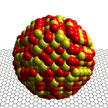 The adoption of a newly developed, facile synthesis method in catalyst designs may permit the rapid screening of nanoalloys for water contaminants. Given the compositional dynamics of this technique, a series of nanoalloys with different surface compositions can be quickly synthesized using a single starting solution and the optimal metal ratio experimentally determined to find the best catalytic reactivity for degrading the pollutant.
The adoption of a newly developed, facile synthesis method in catalyst designs may permit the rapid screening of nanoalloys for water contaminants. Given the compositional dynamics of this technique, a series of nanoalloys with different surface compositions can be quickly synthesized using a single starting solution and the optimal metal ratio experimentally determined to find the best catalytic reactivity for degrading the pollutant.
Sep 15th, 2014
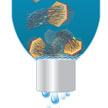 One of the problems with activated carbon is the disposal of adsorbed contaminants along with the adsorbent. Another concern is that its pores are often blocked during adsorption. By contrast, carbon nanotubes' (CNTs) open structure offers easy, undisrupted access to reactive sites located on nanotubes' outer surface. That's why researchers see CNTs as an attractive potential substitute for activated carbon. Researchers now have demonstrated that individual CNTs can be integrated into micrometer-sized colloidal particles without using a heavy or bulky particulate support.
One of the problems with activated carbon is the disposal of adsorbed contaminants along with the adsorbent. Another concern is that its pores are often blocked during adsorption. By contrast, carbon nanotubes' (CNTs) open structure offers easy, undisrupted access to reactive sites located on nanotubes' outer surface. That's why researchers see CNTs as an attractive potential substitute for activated carbon. Researchers now have demonstrated that individual CNTs can be integrated into micrometer-sized colloidal particles without using a heavy or bulky particulate support.
May 27th, 2014
 Concern about the depletion of global water resources has grown rapidly in the past decade due to our increasing global population and growing demand for other diverse applications. Since only 2.5% of the Earth's water is fresh, it has been reported that almost half of the world's population is at risk of a water crisis by the year 2025. Accordingly, significant research efforts have been focused on the desalination of brackish/seawater and the remediation and reuse of wastewater to meet the agricultural, industrial, and domestic water demands.
Concern about the depletion of global water resources has grown rapidly in the past decade due to our increasing global population and growing demand for other diverse applications. Since only 2.5% of the Earth's water is fresh, it has been reported that almost half of the world's population is at risk of a water crisis by the year 2025. Accordingly, significant research efforts have been focused on the desalination of brackish/seawater and the remediation and reuse of wastewater to meet the agricultural, industrial, and domestic water demands.
Mar 27th, 2014
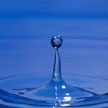 Individual graphene sheets and their functionalized derivatives have been used to remove metal ions and organic pollutants from water. These graphene-based nanomaterials show quite high adsorption performance as adsorbents. However they also cause additional cost because the removal of these adsorbent materials after usage is difficult and there is the risk of secondary environmental pollution unless the nanomaterials are collected completely after usage. One solution to this problem would be the assembly of individual sheets into three-dimensional (3D) macroscopic structures which would preserve the unique properties of individual graphene sheets, and offer easy collecting and recycling after water remediation.
Individual graphene sheets and their functionalized derivatives have been used to remove metal ions and organic pollutants from water. These graphene-based nanomaterials show quite high adsorption performance as adsorbents. However they also cause additional cost because the removal of these adsorbent materials after usage is difficult and there is the risk of secondary environmental pollution unless the nanomaterials are collected completely after usage. One solution to this problem would be the assembly of individual sheets into three-dimensional (3D) macroscopic structures which would preserve the unique properties of individual graphene sheets, and offer easy collecting and recycling after water remediation.
Mar 26th, 2014
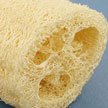 In microbial fuell cells, the anode material as the medium of electron transfer and as the support for biofilm formation is a key component that determines the effectiveness and efficiency of power generation. Generally, the anode will perform better if the anode material has a greater specific surface area and higher affinity for living bacterial cells. The direct carbonization of low-cost and naturally available materials provides a potential alternative to commercial anodes with high specific surface area. In new work, scientists demonstrate a new procedure to generate novel macroporous carbon prepared from a fibrous loofah sponge.
In microbial fuell cells, the anode material as the medium of electron transfer and as the support for biofilm formation is a key component that determines the effectiveness and efficiency of power generation. Generally, the anode will perform better if the anode material has a greater specific surface area and higher affinity for living bacterial cells. The direct carbonization of low-cost and naturally available materials provides a potential alternative to commercial anodes with high specific surface area. In new work, scientists demonstrate a new procedure to generate novel macroporous carbon prepared from a fibrous loofah sponge.
Dec 17th, 2013
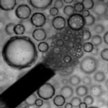 The construction of artificial micro- and nanomotors is a high priority in the nanotechnology field owing to their great potential for diverse potential applications, ranging from targeted drug delivery, on-chip diagnostics and biosensing, or pumping of fluids at the microscale to environmental remediation. In new work, researchers have now reported the first example of micromotors for the active degradation of organic pollutants in solution. The novelty of this work lies in the synergy between internal and external functionality of the micromotors.
The construction of artificial micro- and nanomotors is a high priority in the nanotechnology field owing to their great potential for diverse potential applications, ranging from targeted drug delivery, on-chip diagnostics and biosensing, or pumping of fluids at the microscale to environmental remediation. In new work, researchers have now reported the first example of micromotors for the active degradation of organic pollutants in solution. The novelty of this work lies in the synergy between internal and external functionality of the micromotors.
Dec 2nd, 2013
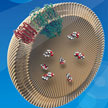 Every year, large quantities of antibiotics are released into lakes and rivers as a byproduct of their use in farming and medicine. Antibiotics in the environment can select for antibiotic-resistant bacterial populations, which can cause severe infections if they come into contact with humans or animals. In addition, antibiotics can disrupt the natural bacterial flora that plays a vital role in maintaining the balance of ecosystems. Scientists have now found that solar-powered proteoliposomes derived from bacteria can extract and store contaminants released into natural bodies of water,
Every year, large quantities of antibiotics are released into lakes and rivers as a byproduct of their use in farming and medicine. Antibiotics in the environment can select for antibiotic-resistant bacterial populations, which can cause severe infections if they come into contact with humans or animals. In addition, antibiotics can disrupt the natural bacterial flora that plays a vital role in maintaining the balance of ecosystems. Scientists have now found that solar-powered proteoliposomes derived from bacteria can extract and store contaminants released into natural bodies of water,
May 7th, 2013
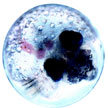 To date, the predominant focus of the nanotechnology risk research endeavor has been defining the fate, transport, and toxic properties of pristine or "as manufactured" nanomaterials. However, the high surface to volume ratio and reactivity of nanoparticles makes them highly dynamic in environmental systems. The resulting transformations of the nanomaterials will affect their fate, transport, and toxic properties. A recent review summarizes what is known about chemical, physical, and biologically mediated transformations of nanomaterials in natural systems and their effects on the resulting nanomaterial behavior.
To date, the predominant focus of the nanotechnology risk research endeavor has been defining the fate, transport, and toxic properties of pristine or "as manufactured" nanomaterials. However, the high surface to volume ratio and reactivity of nanoparticles makes them highly dynamic in environmental systems. The resulting transformations of the nanomaterials will affect their fate, transport, and toxic properties. A recent review summarizes what is known about chemical, physical, and biologically mediated transformations of nanomaterials in natural systems and their effects on the resulting nanomaterial behavior.
Jan 10th, 2013
 The adoption of a newly developed, facile synthesis method in catalyst designs may permit the rapid screening of nanoalloys for water contaminants. Given the compositional dynamics of this technique, a series of nanoalloys with different surface compositions can be quickly synthesized using a single starting solution and the optimal metal ratio experimentally determined to find the best catalytic reactivity for degrading the pollutant.
The adoption of a newly developed, facile synthesis method in catalyst designs may permit the rapid screening of nanoalloys for water contaminants. Given the compositional dynamics of this technique, a series of nanoalloys with different surface compositions can be quickly synthesized using a single starting solution and the optimal metal ratio experimentally determined to find the best catalytic reactivity for degrading the pollutant.
 Subscribe to our Nanotechnology Spotlight feed
Subscribe to our Nanotechnology Spotlight feed





